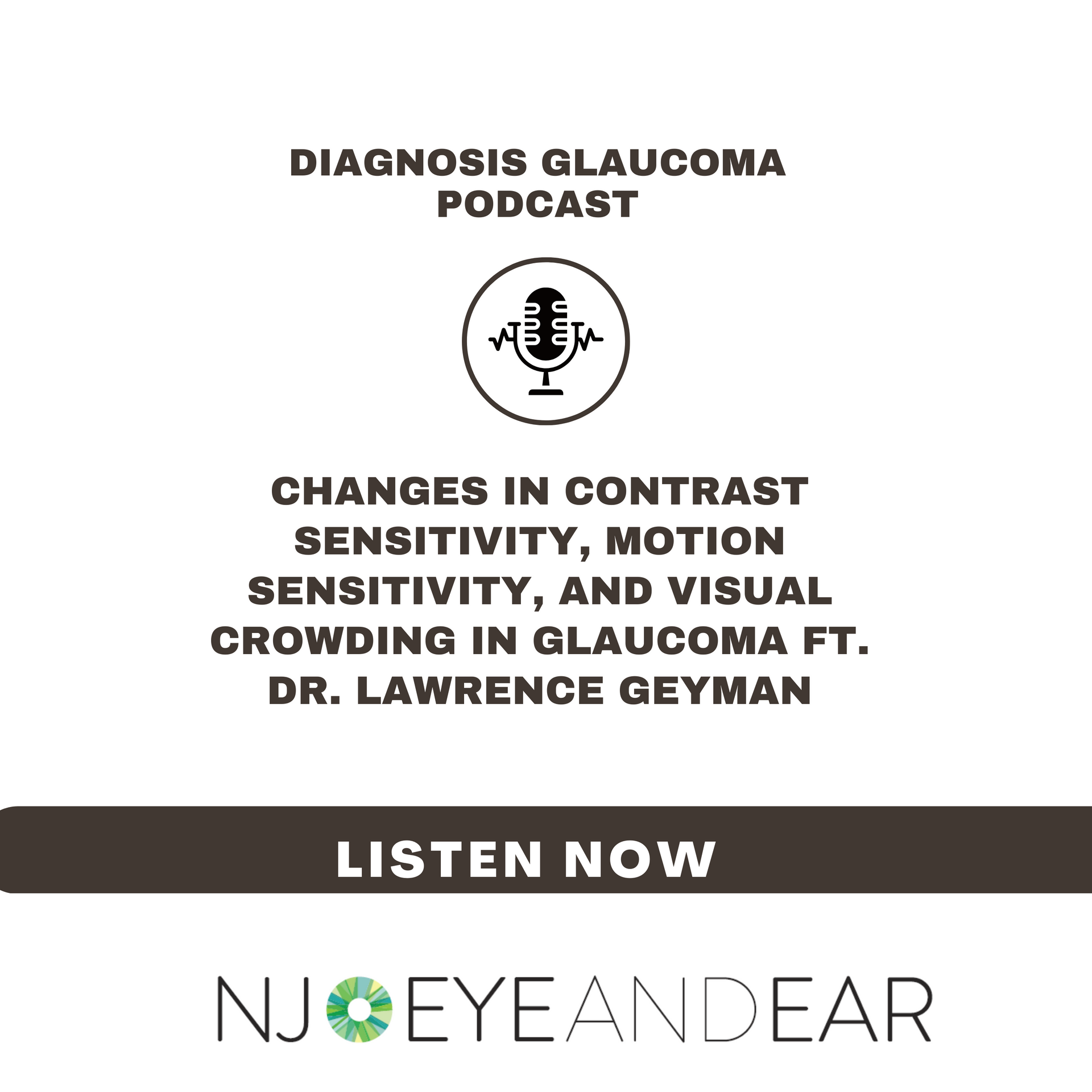What is Myopia?
Jessica J. Lee O.D • March 19, 2021
What Does NJ Eye and Ear Offer for Myopia?
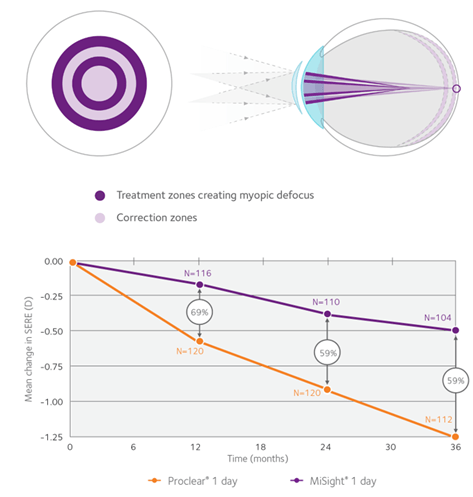
What is Myopia?
Myopia is nearsightedness, which means that you can see close objects, but objects farther away appear blurred. Myopia occurs if the eyeball is too long or the cornea (the clear front cover of the eye) is too curved. As a result, the light entering the eye isn’t focused correctly, and glasses or contact lenses will correct the blur.
Why is my child’s prescription going up every year?
Myopia prescription tends to get worse as kids get older, because as the child grows, their eyes continue to grow as well. The peak of progression is usually around 8-13, and usually slows down or stabilizes around age 16-18.
What is Myopia control?
“Myopia control” is a term used to describe specific treatments to slow the progression of nearsightedness in children.
What is offered at NJ Eye and Ear for myopia control?
Currently we offer two options of specialty myopia control contacts lenses: MiSight soft lenses, and Ortho-K hard lenses. These are two very different types of contacts, and the doctor would recommend you the better option after a consultation.
MiSight Lenses (Coopervision)
MiSight lenses are the first FDA-approved soft contact lenses for controlling myopia progression in children. These are soft, disposable lenses that are worn during the day, and discarded at night. Patient cannot sleep in these lenses.
MiSight lenses have concentric rings to redirect how light hits the retina, which tricks the eye into not growing too long. Studies have shown reduction in myopia progression by 59% compared to standard single vision daily lenses.
To get the full recommended benefit, children must wear the MiSight lenses at least six days a week, for 10 hours a day. Like all standard lenses, MiSight lenses pose a risk for corneal infection. Good contact lens hygiene can lower this risk.
Ortho-Keratology (Paragon CRT lenses)
Ortho-K uses a series of custom-fitted hard contact lenses to temporarily reshape the cornea. You can imagine them like retainers, but for the eyes. These hard lenses are worn before bedtime, then removed in the morning. When the lenses are worn nightly, children with myopia can see clearly the next day without needing glasses or contacts throughout the day. But when the child stops using the lenses, the cornea will go back to its original shape and myopia returns.
Multiple studies suggest ortho-K lenses slow the eye’s growth by nearly 53%, effectively slowing down the progression of myopia.
Wearing any lenses overnight can increase the risk of infection, therefore, they require thorough cleaning and extra hygiene steps compared with disposable lenses.
Contact lenses for children sound intimidating, however most children between age 8-13 can complete our insertion and removal training (either MiSight or Ortho-K) within 1 to 2 days.
What else can I do to slow down the progression of myopia?
- Some studies show that outdoor activity reduces the prevalence of myopia in children. I recommend children to spend at least 1-2 hours outdoors during the day.
- 20/20/20 rule is especially important due to the increased computer/screen-time during these times. Every 20 minutes of screen-time, look 20 feet away for 20 seconds.
Jessica J. Lee O.D
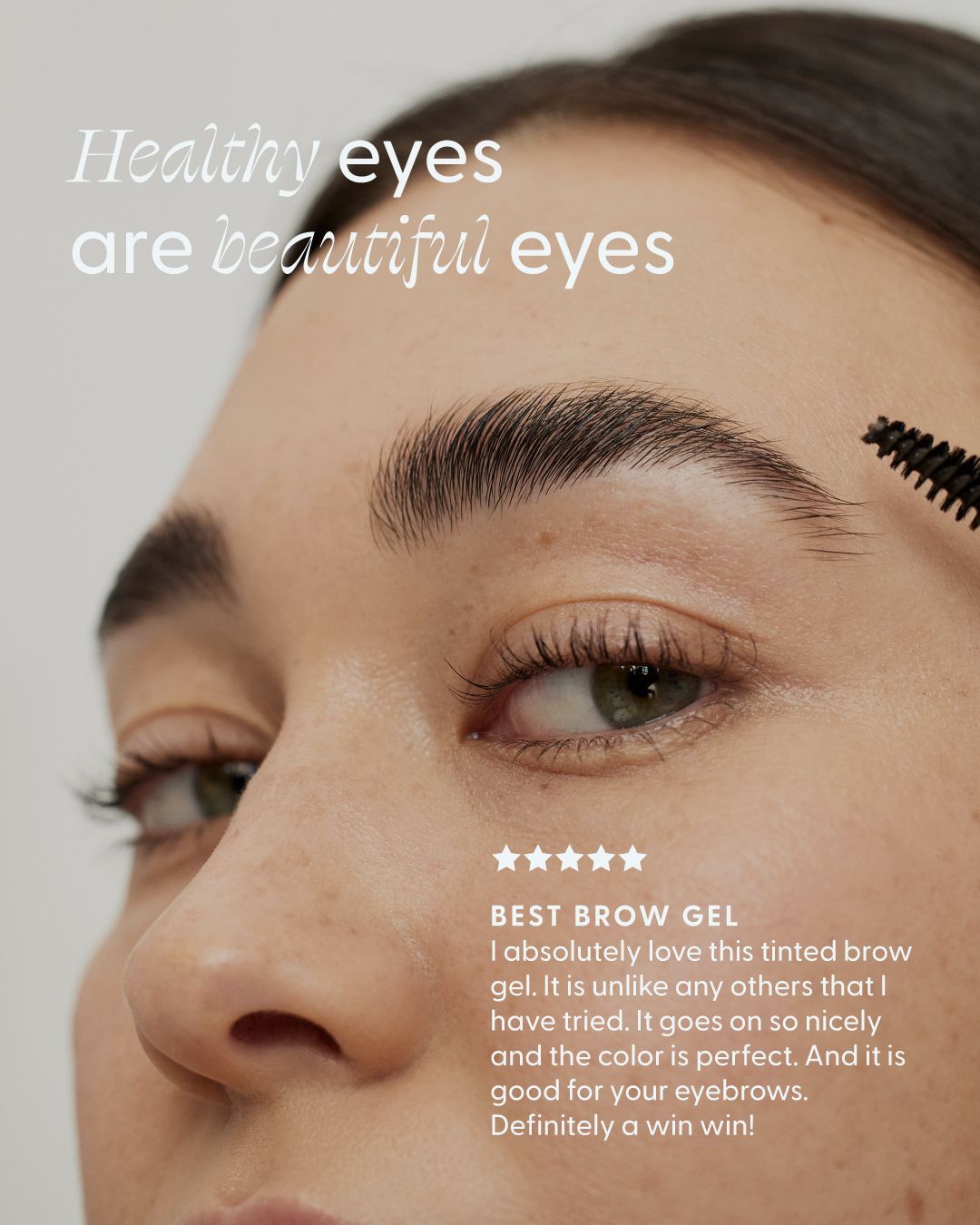
Let’s face it—traditional makeup wasn’t made with your eyes in mind. If your eyeliner stings, your mascara flakes, or your lash serum irritates, you’re not imagining it. Most beauty products were never tested with your ocular health as a priority. But that ends now. NJ Eye and Ear is thrilled to introduce a new collaboration with Twenty/Twenty Beauty , the revolutionary makeup brand founded by Dr. Diane Hilal-Campo , a board-certified ophthalmologist who decided to shake up the beauty industry for good. And the best part? It’s now available to purchase exclusively at our Englewood, NJ, location. What Is Twenty/Twenty Beauty? Developed by an eye doctor who saw how traditional cosmetics were wreaking havoc on her patients’ vision, Twenty/Twenty Beauty was created to fill a major gap in the market: makeup that’s safe, effective, and ophthalmologist-tested. This innovative line features: ✅ Eye-Safe Ingredients – No prostaglandin analogues, parabens, or harsh preservatives ✅ Clean Formulas – Formulated without toxins ✅ Designed to nourish lashes, lids, and brows—not irritate them ✅ Free from harmful preservatives, parabens, and prostaglandin analogues ✅ Ophthalmologist-developed and tested—because your eyes deserve more than just “hypoallergenic”
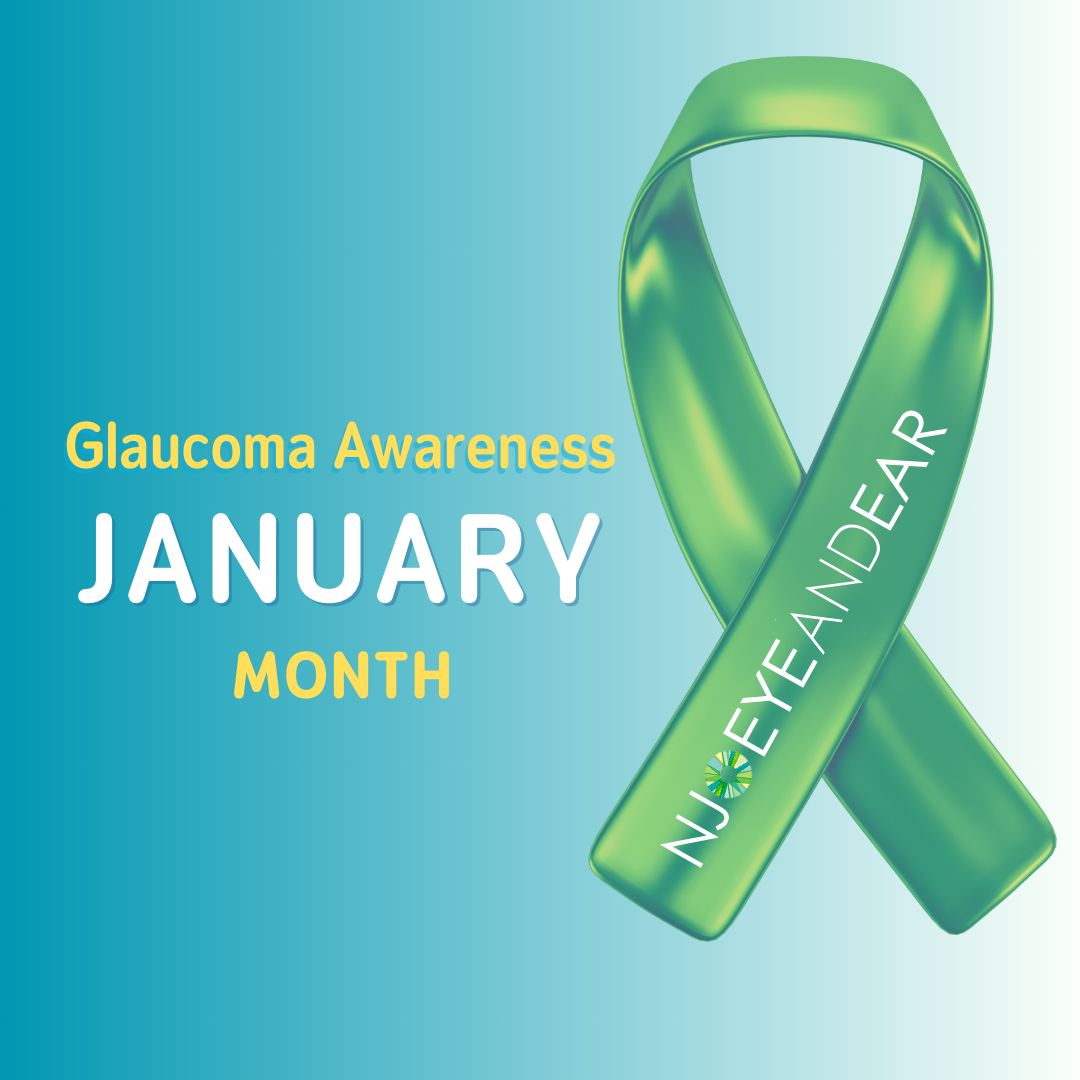
January is Glaucoma Awareness Month, and in this month we dive into aspects of glaucoma care to help our patients. To learn more about general facts about glaucoma, please refer to the article from 2024. In this post, we will touch on the different types of treatments available for glaucoma. In glaucoma, eye pressure damages the optic nerve and leads to irreversible vision loss. The goal of glaucoma treatment is to lower the eye pressure. This can be accomplished in several ways: eye drops, procedures, and surgeries. Each has its advantages and disadvantages. The treatment of glaucoma is highly personalized and different treatments apply to different patients. The most straightforward and often first line treatment of glaucoma involves the use of eye drops . There are multiple classes of eye drops, and each has its own set of side-effects that are taken into account when providing recommendations to patients. Eye drops are typically used anywhere from one to three times daily. As glaucoma advances, the eye pressure may respond less well to eye drops and require additional treatments, such as procedures or surgeries. Procedures for glaucoma involve lasers and injections. Laser treatment varies depending on the type of glaucoma. The most common form of glaucoma, termed open-angle glaucoma, occurs when the natural drain in the eye does not function well. One cause of this poor function occurs due to a clogging of the natural sieve that filters out the fluid in the eye, called the trabecular meshwork. For this form of glaucoma, a laser may be used to clean this sieve, a procedure called trabeculoplasty. Trabeculoplasty has been in use for decades, supported by a well established scientific literature. In fact, it is now recommended as first line therapy in many instances. The second form of glaucoma, angle-closure glaucoma, occurs when the natural drain is blocked. A different laser procedure, called an iridotomy, attempts to relieve this blockage. A relatively new procedure involves the injection of a medication into the eye , whereby it slowly dissolves over a period of months. This injection effectively acts as a substitute for an eye drop and may be beneficial in patients who do not tolerate eye drops well. Sometimes, eye drops and procedures are not enough to control the eye pressure, and the eye remains at risk of vision loss. In these cases, surgery may be required. Surgery can be divided into minimally invasive glaucoma surgeries (MIGS) and traditional surgeries. MIGS, often performed at the time of cataract surgery, try to rehabilitate the natural drain in the eye. These involve the use of stents and other instruments to open the natural drain. Sometimes, even these surgeries are not enough, and the use of traditional surgeries is required. In these cases, the natural drain cannot be rehabilitated, and a bypass procedure is performed, whereby a tiny window is created in the eye to allow the fluid to exit the eye and lower the eye pressure. There are two variants of this procedure: in one, the tiny window is created and left as is, and in the other, a small tube is inserted into the tiny window. The treatment of glaucoma has evolved over many years and now encompasses a wide variety of therapies that allow for a personalized approach. And fortunately, for the great majority of patients, appropriate treatment can slow or stop the progression of glaucoma. If you have any questions or concerns about glaucoma or its treatment, we here at the Glaucoma Center at NJ Eye and Ear, consisting of myself, Dr. Khelly Savant, Dr. Nahndi Bush , and Dr. Daniel Stegman , are always available to assist you in making decisions regarding your glaucoma care.
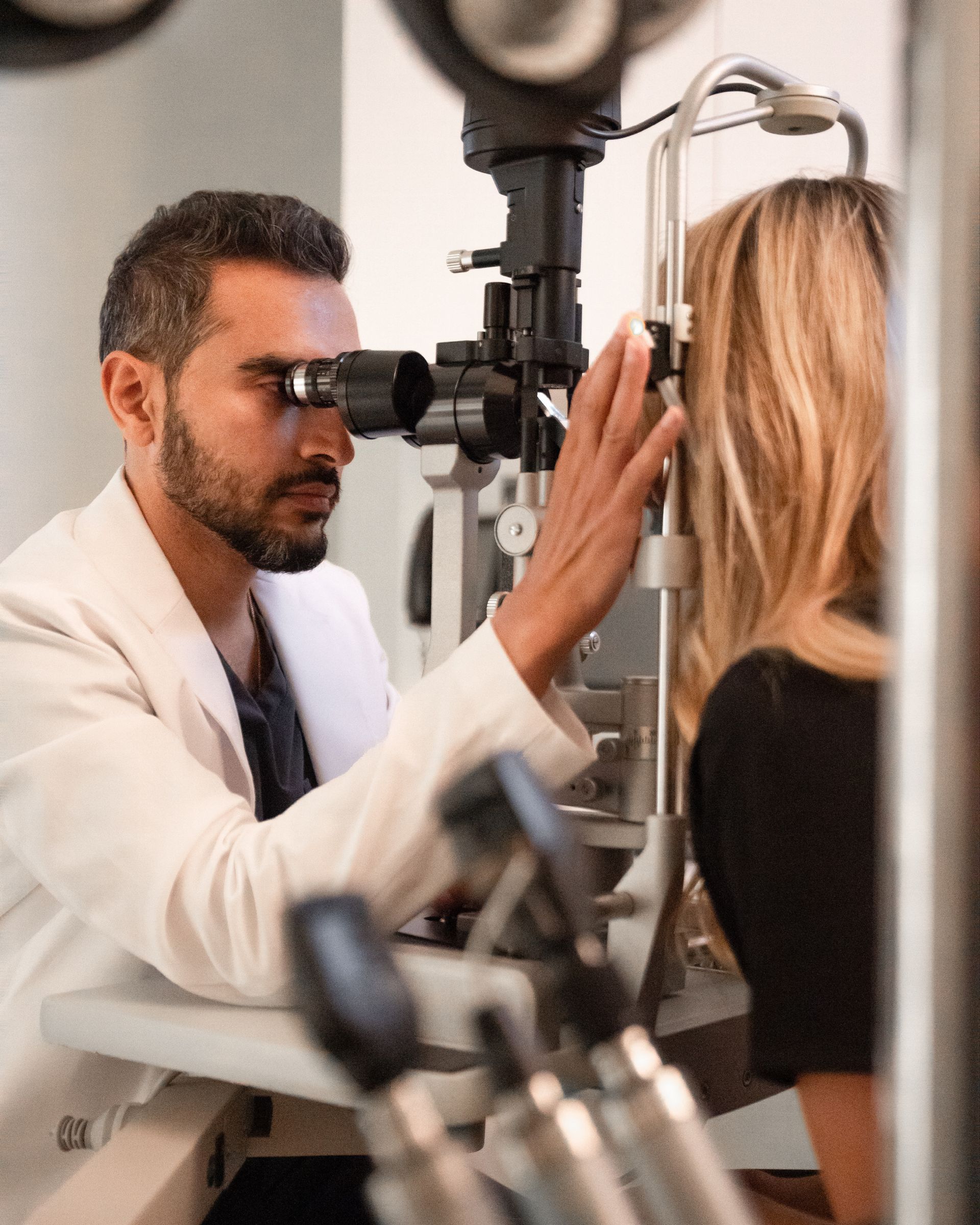
Dry eye disease is a prevalent and sometimes debilitating condition due to inadequate lubrication or rapid evaporation from the surface of the eye. It can cause blurry vision, discomfort, redness, and a chronic gritty sensation. The prevalence of dry eye disease in the United States is estimated to affect over 16 million adults. This might be an underestimate, as many people may not seek medical attention for milder symptoms. The impact of dry eye disease is more than simple discomfort; it can impair many daily activities such as reading, driving, and working on a computer. It is considered a chronic pain condition and can deteriorate one’s quality of life. Causes of dry eye can be numerous, including even a fan, heater, or air conditioner near your bed while sleeping. Wearing contact lenses or prolonged computer and cellphone use can also be culprits. Lastly, eye surgeries, such as LASIK and cataract surgery, are known to worsen dry eye symptoms. Patients undergoing these procedures are advised to optimize their dry eye before surgery to minimize issues afterwards. Addressing any dryness before surgery is also critical for the ophthalmologist to get the most accurate measurements for the best chance at good vision after surgery. The good news is, with proper management before and after surgery, the symptoms of dry eye can be minimal to none. There are various treatments for dry eye and they must be customized for every patient depending on the severity. Initial therapies can include over-the-counter medications, such as artificial tears that can relieve symptoms by lubricating the surface of the eye. If these do not adequately control symptoms, prescription medications, such as cyclosporine (Restasis) and lifitegrast (Xiidra) among others, can be used to increase natural tear production and reduce inflammation on the surface of the eye. For some individuals, even these treatments are not sufficient however. This can be due to underlying medical conditions, such as Sjogren’s disease or thyroid imbalances. These patients and others who are dissatisfied with their symptoms can benefit from treatments such as amniotic membrane application. These can protect the cornea, reduce inflammation, and promote regeneration of the eye’s surface. For those patients struggling despite consistent use of eyedrops, these and other therapies can be game changing. Thankfully, there are a multitude of treatments available to alleviate dry eye. With a comprehensive and tailored approach from an eyecare specialist, your dry eye symptoms can be better by next July.
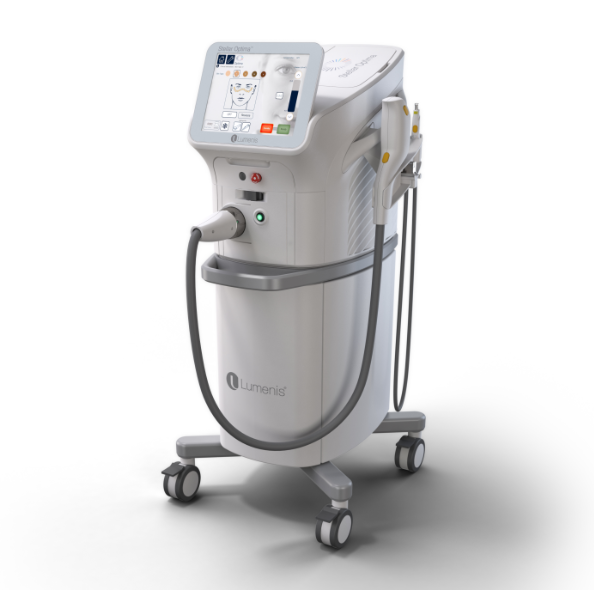
Dry eye disease is becoming increasingly common, affecting millions of people worldwide. This chronic condition can significantly impact your life, sometimes making even the smallest of tasks seem difficult. If you have eye pain, blurry vision, and dry or watery eyes, it could be a sign that you have dry eye disease. But don’t worry! With an in-depth eye exam, our team can assess your vision and eye health to get you the treatment you need. With treatments like OptiLight by Lumenis, we can help manage your dry eye symptoms and get you back to seeing clearly and comfortably. Keep reading to learn more about OptiLight by Lumenis and how it can improve your life. What Is Dry Eye Disease? Dry eye disease is a common eye condition that occurs when there is an issue with any one of the three components of your tears. Your tears are made up of 3 distinct layers, all of which work together to keep your eyes healthy: ● The oily layer prevents your tears from evaporating too quickly ● The watery layer delivers nutrients to your eyes ● The mucus layer keeps your tear film stuck to the surface of your eyes What are the 2 Types of Dry Eye Disease? There are two types of dry eye disease. Evaporative Dry Eye (EDE) EDE is the most common type of dry eye disease. This type of dry eye occurs when you lack the proper amount of oil in your tears. When this happens, your tears can evaporate too quickly, drying out your eyes. In some cases, EDE can be caused by meibomian gland dysfunction, a disorder where the meibomian glands in your eyes become blocked, limiting the amount of oil being produced for your tears. Aqueous Tear Deficiency (ATD) If you suffer from ATD, your eyes lack the aqueous layer in your tears. This means that your eyes aren’t producing enough tears to keep the eye moist, which can lead to irritating and uncomfortable symptoms. What are the Symptoms of Dry Eye Disease? If you are suffering from dry eye disease, you may notice any of the following symptoms: ● A burning or scratchy sensation in your eyes ● Stringy mucus in or around your eyes ● Irritated or overly-watery eyes ● Sensitivity to light orphotophobia ● Eye redness, blurred vision, or eye fatigue ● A sensation of having something in your eyes ● Difficulty wearing contact lenses If you are experiencing any of these symptoms, book an appointment with your eye doctor to receive a dry eye disease diagnosis and get the treatment you need. What Is OptiLight by Lumenis? OptiLight by Lumenisis a safe, gentle, and effective treatment done to manage dry eye disease. This non-invasive procedure is the first and only FDA-approved intense pulsed light(IPL) treatment for dry eye management. OptiLight uses pulses of light precisely administered in the area below the eyes to reduce dry eye symptoms. This 10-15 minute procedure can relieve dry eye symptoms by: ● Increasing tear break-up time ● Reducing the amount of demodex mites and bacteria around your eyes ● Decreasing inflammation inflammation ● Improving meibomian gland functionality What to Expect If your eye doctor has recommended the OptiLight treatment , they will go over everything you can expect before, during, and after your appointment. Preparing for Your Appointment To prepare for your appointment you should avoid: ● Using skin brightening agents or serums for the week before your appointment ● Using tanning beds 1 month prior to your appointment ● Getting any neuromodulators (anti-wrinkle injectables) for at least 3 months before your appointment ● Taking oral medicines in the 3 months prior to your appointment The OptiLight Treatment This treatment is fast and simple, taking only 10–15 minutes. During your treatment your doctor will apply a cool gel on the treatment area and cover your eyes with shields to protect them. As light is applied to the skin, you may experience a warm or a tapping sensation, but you shouldn’t feel any pain. Post-Procedure Care While side effects are uncommon, your eyes may feel slightly more dry or gritty for the day following your procedure. If you do experience dry eyes, you can use preservative-free artificial tears. Following your treatment, your skin will be sensitive, so we recommend avoiding sun exposure and wearing sunscreen. Am I a Good Candidate for OptiLight by Lumenis? How do you know if OptiLight is the right treatment for you? During an eye exam, your doctor can determine whether or not it is the right option for you. In general, OptiLight isn’t recommended for patients who: ● Are taking certain medications, like Accutane ● Have active acne ● Suffer from certain skin disorders ● Are susceptible to keloid scarring ● Have severe scarring ● Have severely sunburned recently Find Relief Today You don’t have to live with the uncomfortable symptoms of dry eye disease. With OptiLight by Lumenis, your symptoms can be managed effectively and efficiently, restoring your quality of life. Our team is always here to help you find relief from dry eyes. Book an appointment today to see how OptiLight by Lumenis can help you!
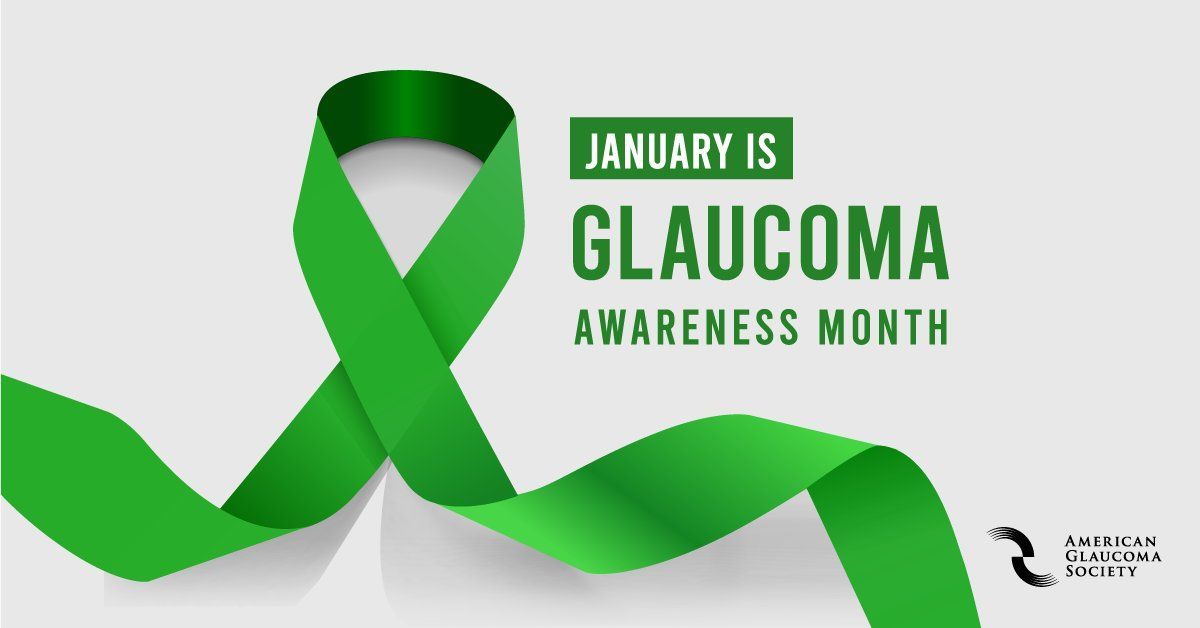
January is Glaucoma Awareness Month , and as a glaucoma specialist, this month holds special importance to me as a physician dedicated to preventing vision loss from glaucoma. I am also a member of the American Glaucoma Society Patient Care Committee, dedicated to improving patient education, outreach, and advocacy. Glaucoma is an eye disease that affects millions of Americans, in which the optic nerve, the nerve that connects the eye to the brain, suffers damage. After a critical amount of optic nerve fibers are damaged, the vision becomes affected. The causes of glaucoma are still being actively researched, though we know that eye pressure plays a significant role in the condition. In fact, nearly all therapies for glaucoma work by lowering the eye pressure. Importantly, simply having high eye pressure does not equate to having glaucoma, in a similar way to how simply having high blood pressure does not equate to having heart disease. Another significant risk factor for glaucoma is age, though rarer forms can affect younger individuals. Unfortunately, the damage that occurs to the optic nerve, and the resulting vision loss, is irreversible. In addition, glaucoma typically affects the peripheral vision first, and it progresses slowly. For this reason, a person may not know that they have vision loss from glaucoma until much later in the disease course. It is no surprise that glaucoma is thus known as the “silent thief of sight.” This is very different from a condition such as macular degeneration, which typically first affects the central vision that we use to read. Patients with vision loss from glaucoma may begin to bump into objects and may not be able to see their feet as they walk. Driving and other complex activities may become difficult or unsafe. Fortunately, with proper care and treatment, the progression of glaucoma can be slowed or halted. In the last decade, there has been an explosion in minimally invasive surgery, which is able to decrease the rate of vision loss with far fewer risks than with traditional glaucoma surgeries. New classes of medications have been made available, and refinements to the traditional surgeries have been devised. There are numerous research groups investigating neuroprotective therapies, which may offer a new way to treat glaucoma by protecting the optic nerve against damage. And, lastly, though likely still a long while away, regenerative therapy to reverse optic nerve damage is being studied, as well. It is important to ask your primary care physician or your primary eye doctor if a glaucoma evaluation is indicated, especially if you feel that your peripheral vision has worsened or if you notice gray, blurry, or black areas in your vision. A glaucoma evaluation often requires only a few additional examinations and tests. The Glaucoma Division at NJ Eye and Ear, consisting of myself, Dr. Khelly Savant, Dr. Nahndi Bush, and Dr. Daniel Stegman, is always here to answer any questions, as we work together to prevent vision loss and preserve our patients’ quality of life.
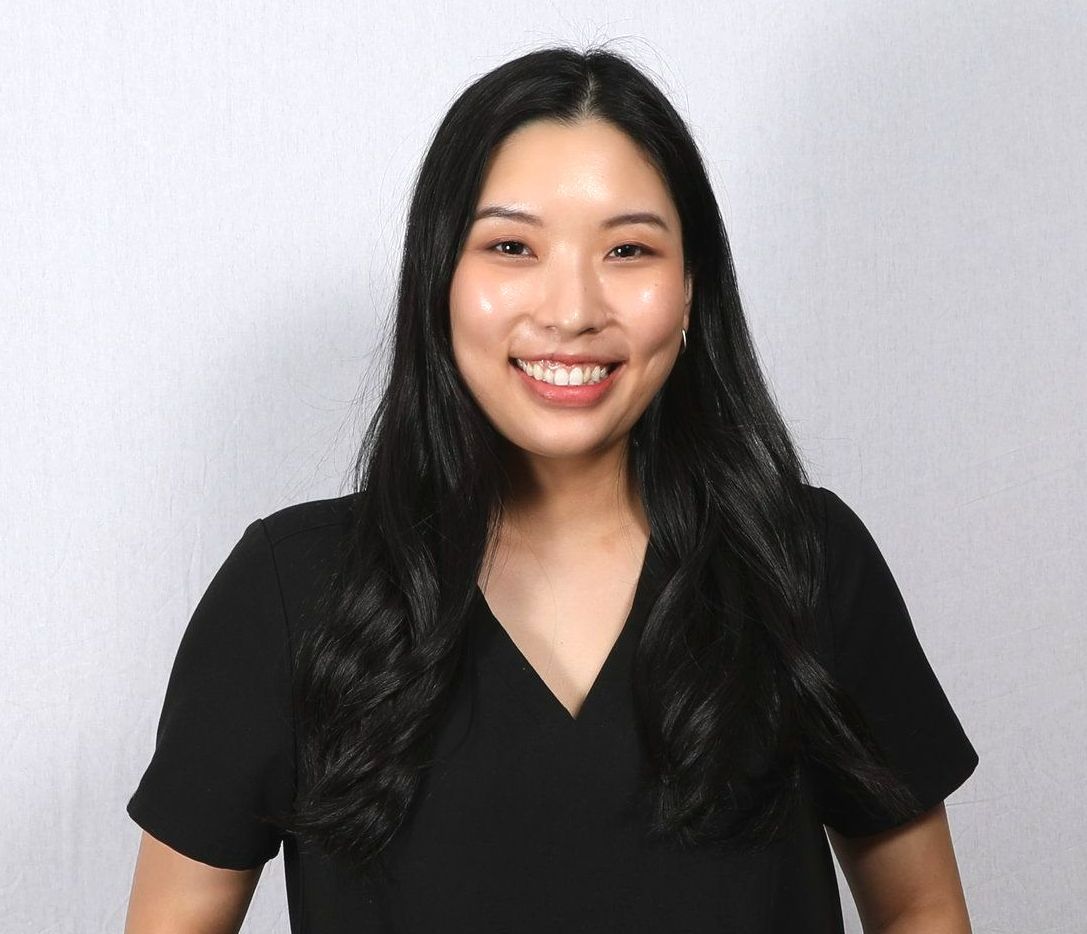
Why is my child’s eyesight getting worse every year? Most parents of near-sighted or myopic children will experience having to get new glasses every year due to the prescription getting worse as the child gets older. This is a very common and expected pattern of myopia for most children, and for many years, new glasses every 6 months or every year was the only solution. In the last few years, there has been many advances in the world of myopia, especially pediatric progressive myopia. But first, let’s go over the basics. What is Myopia? Myopia is nearsightedness, which means that you can see close objects, but objects farther away appear blurred. Myopia occurs if the eyeball is too long or the cornea (the clear front cover of the eye) is too curved. As a result, the light entering the eye isn’t focused correctly, and glasses or contact lenses will correct the blur. What is Myopia Control? “Myopia Control” is a term used to describe specific treatments to slow the progression of nearsightedness in children. What is offered at New Jersey Eye and Ear for Myopia control? 1. Ortho-Keratology hard lenses 2. MiSight soft contact lenses 3. Atropine 0.02% eye drops Information on the current Myopia Controls Ortho-Keratology (Paragon CRT lenses) Ortho-Keratology uses a series of custom-fitted hard contact lenses to temporarily reshape a child’s cornea. When the lenses are worn nightly, children with myopia can see clearly the next day without needing eyeglasses or contact lenses. When the child stops using the lenses, the cornea will go back to its original shape and myopia returns. Multiple studies suggest Ortho-Keratology lenses slow the eye’s growth by nearly 53%, effectively slowing down the progression of myopia. Wearing any lenses overnight can increase the risk of infection, therefore, they require thorough cleaning and extra hygiene steps compared with disposable lenses. MiSight Lenses (Coopervision) MiSight lenses are the first FDA-approved contact lenses for controlling myopia progression in children. These are soft, disposable lenses that are worn during the day, and discarded at night. Patient cannot sleep in these lenses. MiSight lenses have concentric rings to redirect how light hits the retina, which tricks the eye into not growing too long. The studies show that MiSight lenses are effective in slowing myopia progression in children by 59%. To get the full recommended benefit, children must wear the MiSight lenses at least six days a week, for 10 hours a day, until they are teenagers. Like all standard lenses, Misight lenses pose a risk for corneal infection. Good contact lens hygiene can lower this risk. Atropine 0.02% Eye Drops Atropine 0.02% eye drops is clinically used to prevent the progression of myopia by strengthening the sclera (white portion of the eye) to make the eye more stable and prevent elongation. The child still has to wear eyeglasses during the treatment to see clearly. Atropine 0.02% eyes drops dosage would be 1 drop in both eyes daily. There are some side effects of stinging, blurred vision or pupil dilation. There is at least a 2-year commitment before any attempts to discontinue the eye drops after stabilizing the refractive error. The drop will not be available at any pharmacy since it has to be compounded for its specific dosage. The prescription will be sent to a compounding pharmacy, and the pharmacy would dispense the drops and assist patient with details on insurance coverages if available. Optometrists that provide these treatments: Dr. Jessica Lee (Englewood Location) Dr. Ester Kohen (Clifton and Englewood Locations) These therapies work differently for every child, so please ask your doctor which would be the most recommended and effective therapy option for your child. Many parents believe their child is “too young” for contact lenses. However, research has shown that both children (ages 8-12) and teenagers (13-17) can safely wear contact lenses. NJ Eye and Ear Contact Lens Department will train with all first time contact lens wearers. Over a three-year period, evidence has shown a statistically significant improvement in self-perception regarding physical appearance, athletic competence, and social acceptance in children wearing contact lenses.

NJ Eye and Ear is proud to celebrate 25 years in business serving the northern New Jersey area under the leadership of Daniel Stegman, MD. NJ Eye and Ear is a progressive, learning-oriented medical practice specializing in treating all manners of ENT, vision and hearing problems. The practice’s goal is to provide the most advanced and cost-effective care to its patients. To that end, NJ Eye and Ear has built a team of the top award-winning physicians and surgeons, encompassing all sub-specialties of ophthalmology, otolaryngology and audiology. NJ Eye and Ear provides eye examinations, allergy testing, ENT problems, and hearing exams. It also offers laser-vision correction, treatment of retinal diseases, clogged tear ducts, cataract, and facial cosmetic surgery to name a few. “We are pioneering at the forefront in health care with state-of-the art equipment and the most fashionable eye boutique in New Jersey,” said Rey Bolic, spokesman for NJ Eye and Ear . With over 25 years of experience in the field, Dr. Daniel Stegman provides comprehensive ophthalmologic care and the treatment of glaucoma. He is widely known and respected for the high quality of care that he provides. At Mount Sinai he completed a clinical and research fellowship in glaucoma, and remains on staff as a clinical instructor of ophthalmology. Dr. Stegman’s research work in glaucoma has been presented at the prestigious Association for Research and Vision in Ophthalmology. He is fluent in Spanish and English, and is also an NYPD Honorary Police Surgeon. Dr. Kevin Ende is double board-certified and has performed over 14,000 ear nose and throat, facial plastic and reconstructive, and hair restoration surgeries over the last 17 years in New York City and Philadelphia. In 2019, Dr. Ende was recruited to head the ENT division of NJ Eye and Ear in Englewood. Dr. Ende has served as a faculty member for the Department of Otolaryngology at the University of California, San Francisco (UCSF), where he taught advanced techniques to surgeons in training. For the past 9 years, Dr. Ende has trained the ENT residents from the highly respected Albert Einstein/Montefiore training program in Bronx, N.Y. Dr. Ende is established as a leading hair restoration specialist in the New York and New Jersey area. Dr. Daniel Chechik is a board-certified ophthalmologist, specializing in retina care and treatment. Dr. Chechik gave back to his community through teaching at SUNY Downstate Health Science Center and Lebanon Hospital where he was an assistant professor. Dr. Chechik completed his residency in 2001 and continued on to complete a fellowship in surgical and medical disorders of the retina and vitreous. He is fluent in Russian, Spanish and Dr. Nahndi Bush has devoted more than 18 years to the practice of comprehensive ophthalmology and glaucoma in northern New Jersey. Following internship at Hackensack University Medical Center, Dr. Bush completed her ophthalmology residency at Mount Sinai Medical Center in New York then stayed on as chief resident, completing a glaucoma fellowship. She serves as a voluntary attending at University Hospital in Newark, where she was recently honored with the 15-year Service Award. Dr. Nirupa C. Cuttler is a comprehensive board certified ophthalmologist who provides a wide array of ophthalmic care. She was raised in central New Jersey and stayed in the state for her undergraduate and medical training. She then went to Royal Oak, Mich. to complete her internship year and ophthalmology residency at William Beaumont Hospital, where she served as chief resident during her last year. She is proficient in Spanish and fluent in Tamil (South Indian language). Dr. Tal Kazam is a board-certified comprehensive ophthalmologist providing a wide spectrum of eye care. She completed her ophthalmology residency at the renowned New York University and Manhattan Eye, Ear and Throat Hospital. Before joining NJ Eye and Ear, Dr. Kazam was in private practice in New York City. She is licensed to practice medicine in New York and New Jersey. Dr. Gautam Kamthan is a board-certified medical and surgical comprehensive ophthalmologist who has been in practice for nearly 10 years. In addition to laser and refractive cataract surgery, he has a particular interest and expertise in high-risk cataracts, the repair of complications from cataract surgery and reconstruction of the front of the eye. He is an assistant professor at the Mount Sinai Medical Center and the New York Eye and Ear Infirmary. He treats veterans at the James J. Peters Veterans Affairs Medical Center in New York City, and has an affiliation with Holy Name Medical Center in New Jersey.


